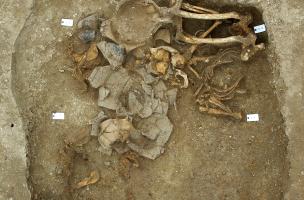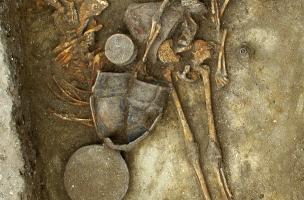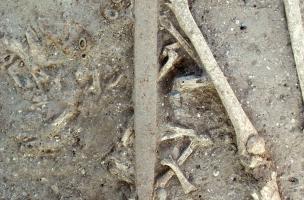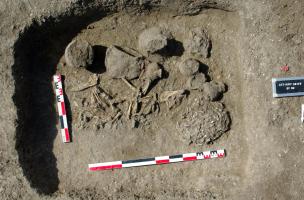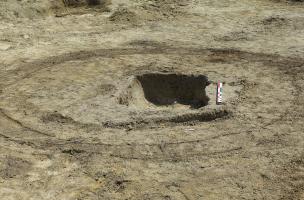You are here
The chariot graves of Attichy
An Inrap team has just excavated a Gallic cemetery in Attichy in the Oise. This excavation, curated by the Regional Archaeological Service (Drac Picardie), prior to the exploitation of a quarry of aggregates, has above all brought to light the graves of two eminent Celtic personages.
On a terrace dominating the River Aisne, the cemetery consists of eleven graves over an area of about 1,300 m2. Twelve persons were buried here: six adults, five children, plus the incinerated remains of another person.

The practice of burial is here predominant.. The cemetery of Atticy dates from about 250 BC, a turning point usually characterised by the abandon of burials for incinerations. This change in funerary practices followed a different rhythm depending on the regions. The Attichy cemetery, with its late abandon of burials, seems to belong to the Aise-Marne cultural group.
Grave goods
Chariot graves
Another chariot grave, today disappeared, was found in Attichy during the 19th century. Dating from the 3rd century BC, those now brought to light are more recent than those of Vasseny and Bucy-le-Long in the Aisne (5th – 4th century BC), but, can be linked with those found in Roissy-en-France during the construction of part of the airport.
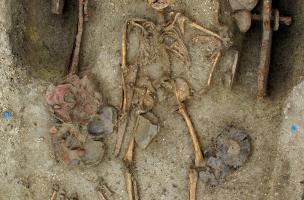
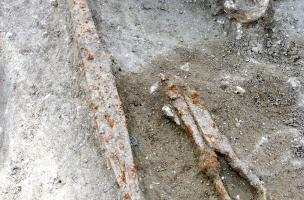
Mahaut Tyrrell
Media communication
Inrap, media partnerships and relations department
+33 (0)1 40 08 80 24
mahaut.tyrrell [at] inrap.fr
Elisabeth Justome
chargée du développement culturel et de la communication
Inrap Nord-Picardie
03 22 33 40 54
elisabeth.justome [at] inrap.fr


